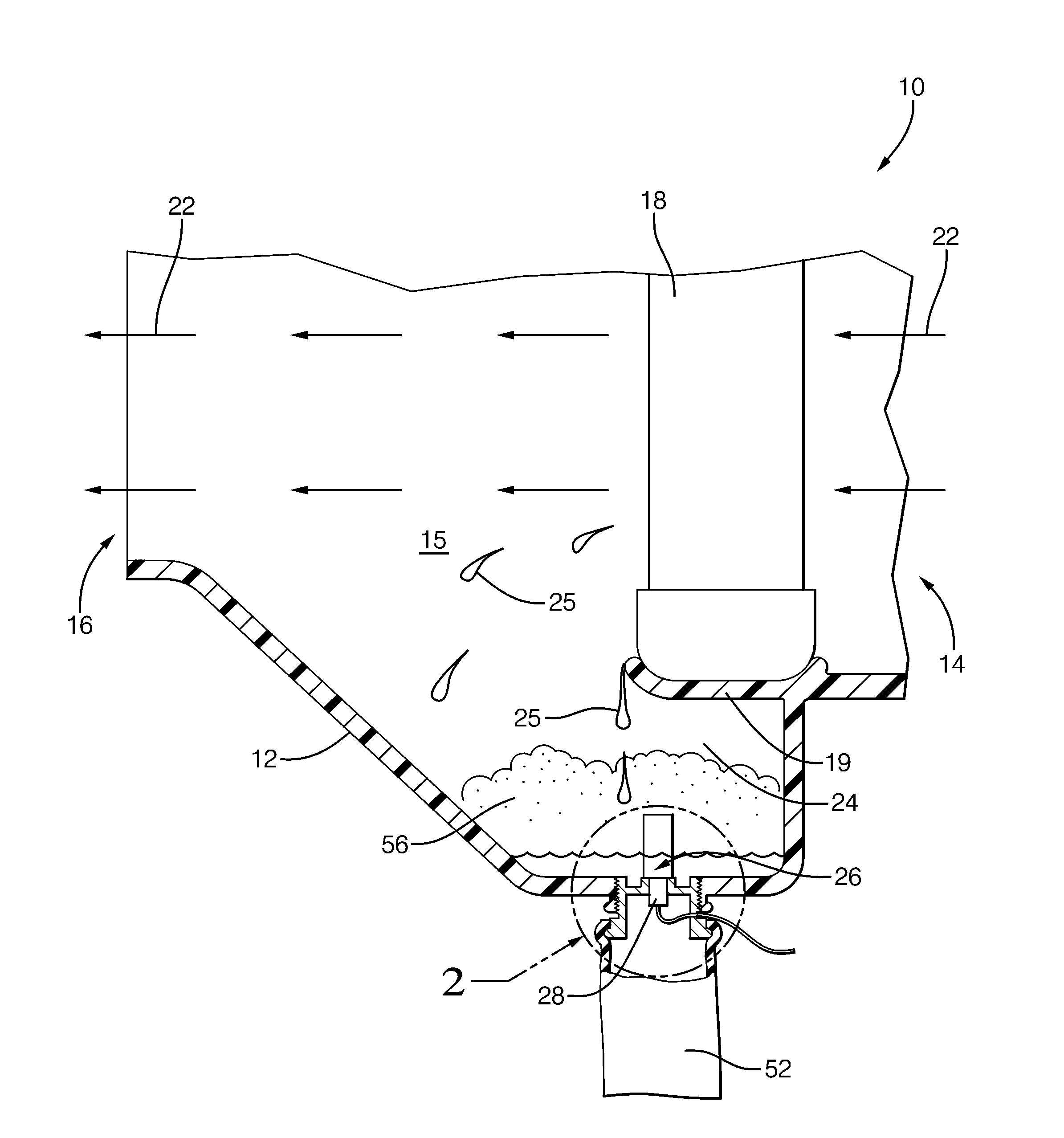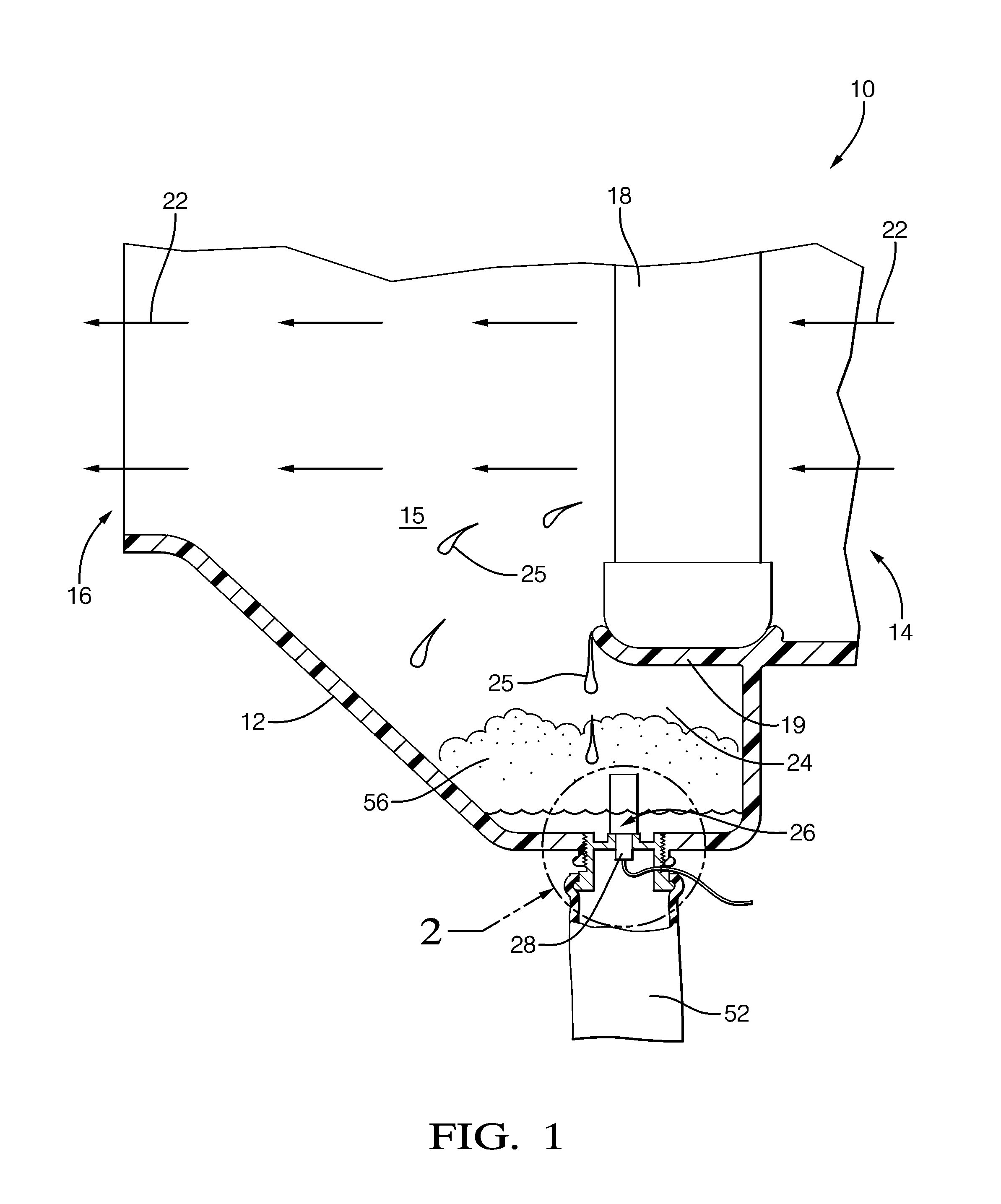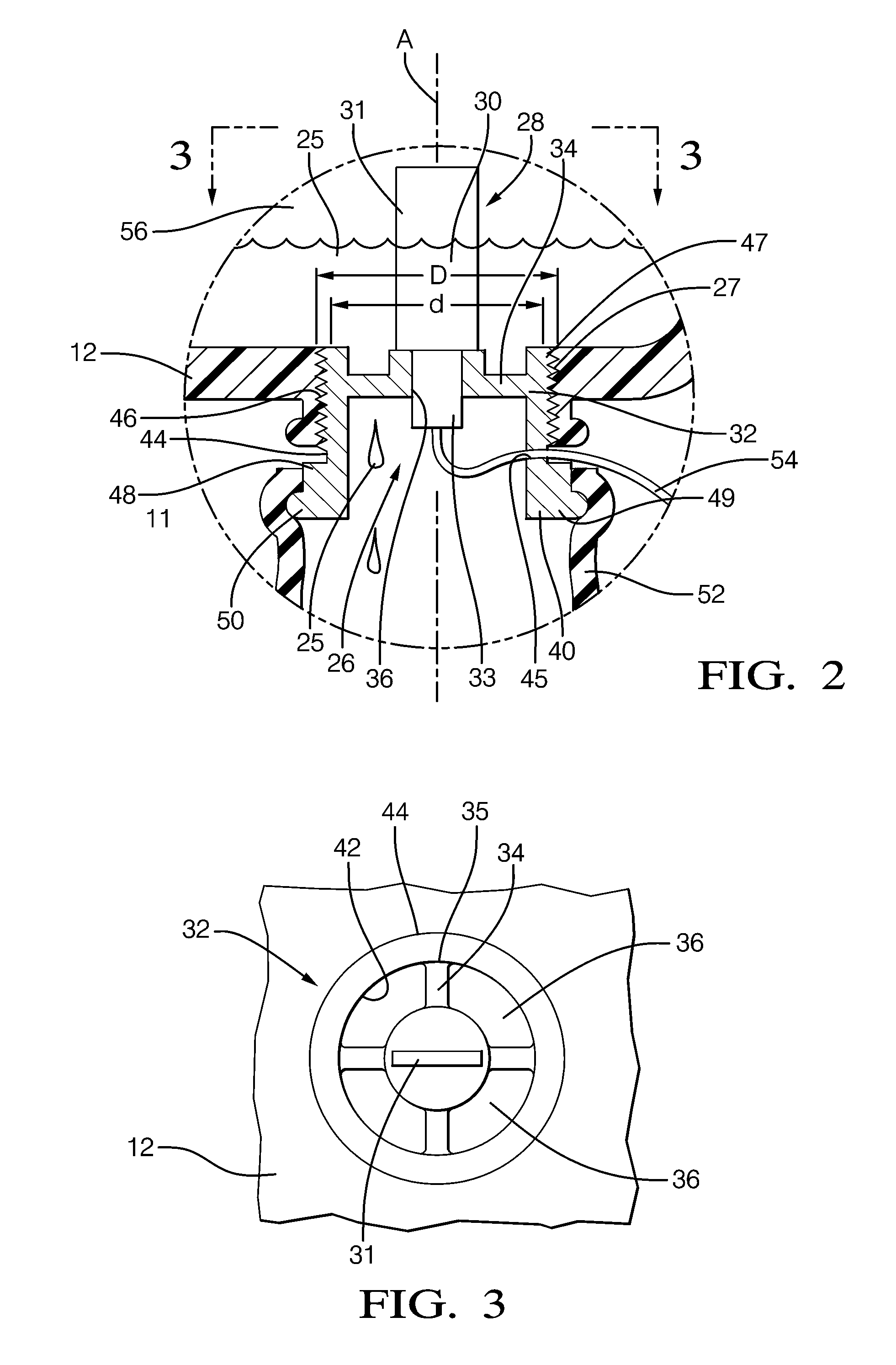Refrigerant leak detection system
a leak detection and refrigerant technology, applied in lighting and heating apparatus, heating types, instruments, etc., can solve the problems of reducing the concentration of refrigerant, and affecting the operation of the system
- Summary
- Abstract
- Description
- Claims
- Application Information
AI Technical Summary
Benefits of technology
Problems solved by technology
Method used
Image
Examples
Embodiment Construction
[0015]In accordance with a preferred embodiment of this invention, referring to FIGS. 1 through 3 is a refrigerant leak detection system 10 that includes a heating, ventilating, and air conditioning (HVAC) module 12 having a condensate sump 24 with a drain hole 26 and a refrigerant sensor assembly 28 positioned within the drain hole 26. The refrigerant sensor assembly 28 is adapted to fixedly engage itself within the drain hole 26 of the HVAC module 12 and to allow for drainage of condensate from the condensate sump 24.
[0016]A typical HVAC module 12 includes an air inlet 14 for drawing in unconditioned air, a labyrinth of passageways 15 for directing air flow throughout the HVAC module 12, and an air outlet 16 for distributing conditioned air to the passenger compartment. Air flow doors (not shown) are positioned at strategic junctures through the passageways 15 in order to selectively direct and proportion an amount of air flow to heat exchangers within the HVAC module 12 to contro...
PUM
 Login to View More
Login to View More Abstract
Description
Claims
Application Information
 Login to View More
Login to View More - R&D
- Intellectual Property
- Life Sciences
- Materials
- Tech Scout
- Unparalleled Data Quality
- Higher Quality Content
- 60% Fewer Hallucinations
Browse by: Latest US Patents, China's latest patents, Technical Efficacy Thesaurus, Application Domain, Technology Topic, Popular Technical Reports.
© 2025 PatSnap. All rights reserved.Legal|Privacy policy|Modern Slavery Act Transparency Statement|Sitemap|About US| Contact US: help@patsnap.com



